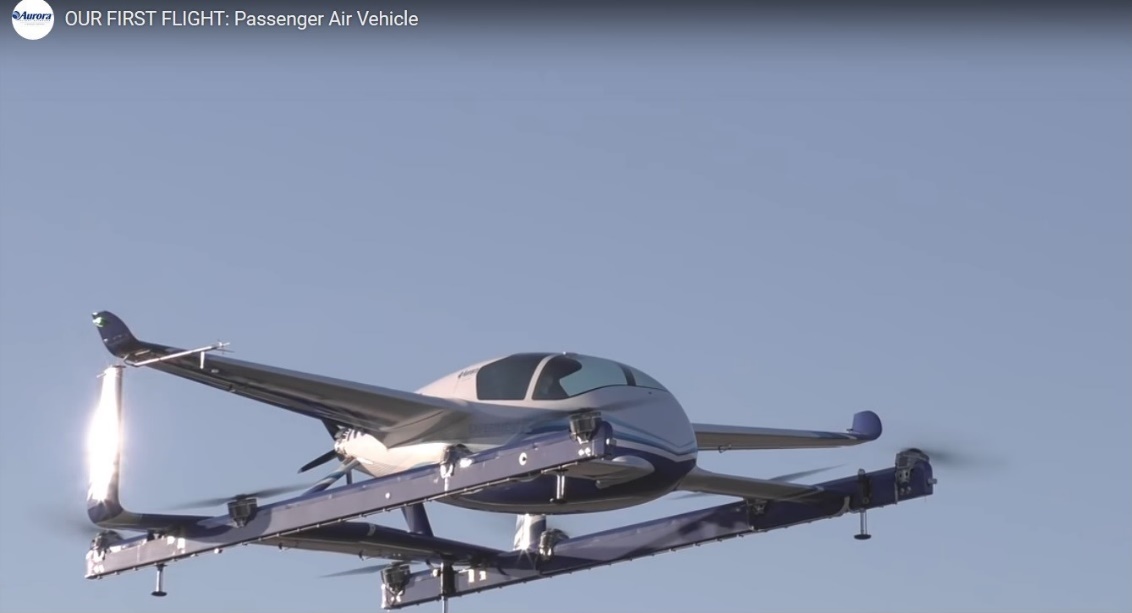
March 22, 2025
Technical Discussion: Paging George Jetson: Your Air Taxi Has Arrived!
Note: This is a re-post of Blog Post #1107. I thought with flying cars back in the news recently, l it is interesting how little progress has been made since I first researched and posted this blog several years ago.
Air Taxis. To the best of my knowledge interest in Urban Air Mobility vehicles, or UAM for short, first gained popularity with the somewhat recent announcement by Uber that it was working on a ride sharing air taxi service. Partnering with Hyundai, several models have already been built with Uber and Hyundai having scheduled demonstration flights back in January.
Before you head out with your smart phone, preparing to order your air taxi, take note that none I could find are in service today, at least any of the newer, UAMs with vertical takeoff and landing. It appears the earliest we’ll see any of these incredible new aircraft in service will be in 2023, when Wisk (see below) and Uber plan to launch their respective services.
A company named Wisk signed recently inked a deal to deploy an air taxi trial in New Zealand. Similar trials are being talked about or even scheduled in cities all over the world as I write this. Uber plans to begin offering its air taxi ride sharing service beginning in 2023.
The concept seems to be that these air taxis will enable passengers to avoid traffic congestion so common in urban areas like New York City, Los Angeles, Chicago, and Atlanta. These UAM vehicles come in a variety of shapes and offerings. Some, for example, are touted as autonomous, requiring no pilot. Others are offered as autonomous with a remote pilot as backup. Then, of course, we have the UAMs with an actual pilot onboard (sign-me up with tis last option, thank you.)
There are currently two general categories of UAMs being built: passenger and cargo vehicles. Passenger models generally range from one to five passengers. Nearly all UAMs are electric, vertical takeoff and landing (VTOL) passenger and cargo air vehicles, which are either autonomous, semi-autonomous, or piloted with a pilot onboard.
Perhaps to their astonishment, perhaps not, Uber and Hyundai are now finding a once vacant field of competitors suddenly becoming a bit crowded. A quick search turned up a handful of companies, many of them already heavy hitters in the aviation industry.
Below I have listed some of these companies, along with one offering from that company. Keep in mind, however, that most of the companies listed have at least one or more UAMs in each category.
Below are a couple of recent articles about air taxis that I found informative.
The Top 10 Air Taxi Stories of 2019
https://www.aviationtoday.com/2020/01/02/top-10-air-taxi-stories-2019/
Wisk signs deal to deploy an air taxi trial in New Zealand
https://techcrunch.com/2020/02/05/wisk-signs-deal-to-deploy-an-air-taxi-trial-in-new-zealand/
Hyundai to build air taxis for Uber’s future aerial ride share network
Boeing
Passenger Air Vehicle
“PAV advances the future of flight and improves safe mobility on-demand. Urban air mobility has tremendous potential for changing the way people, goods, and ideas overcome today’s congested roadways.”
“PAV embodies the potential to change how people, goods, and ideas move throughout the world. Aurora Flight Sciences is developing both two and four-passenger variants with cargo options.”
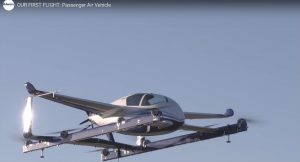
Capacity: 2 & 4-passenger variants with cargo options
https://www.aurora.aero/pav-evtol-passenger-air-vehicle/
Bell
Nexus
Your commute, transformed.
Turn a 45-minute drive into a 10-minute flight. The safe, convenient Air Taxi is designed to let you make the most of your commute. Its sleek cabin offers a comfortable space for you to relax. Or work. Or socialize. All while saving your most precious resource: time.
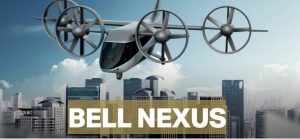
Capacity: 4 Passengers
https://www.bellflight.com/products/bell-nexus
Volocopter
Volocity
“The VoloCity will become the first commercially licensed Volocopter, developed according to the high standards and requirements of the European Aviation Safety Agency (EASA). Our intensive testing programme has shaped the innovative design and outstanding overall performance of the VoloCity. Quiet, safe, and comfortable, the VoloCity engenders Urban Air Mobility.”
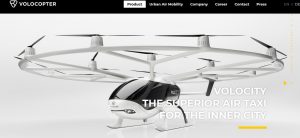
Capacity: 2 Passengers and hand luggage
https://www.volocopter.com/en/
Sabrewing
Rhaegal RG-1
“The Rhaegal is a new generation of regional cargo UAV that offers high-efficiency, all-weather operation with vertical landing and takeoff (VTOL) capabilities. It carries a payload of up to 1,000 lbs / 454 kg over a distance of 1000 nm / 1850 km with a cruise speed of 180 knots / 330 kph.”
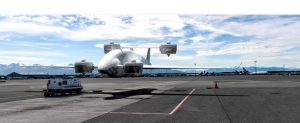
Payload weight (VTOL) 363 kg / 800 lbs
https://www.sabrewingaircraft.com/cargo-uav/
Metro Hop
Metro Hop Cargo
“At Metro Hop, we believe that by focusing solely on urban parcel transport first, we will create a lucrative industry using piloted planes that already have a known path to certification. Once certificated, the Metro Hop Cargo planes can immediately begin operating commercially. In addition, we can accelerate the process of implementing subsequent technology and regulations for pilotless operations once an existing commercial fleet is in service and generating revenue.”
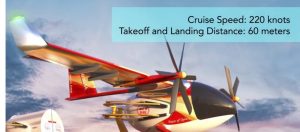
Payload: 450 Kg or approximately 992 lbs.
https://metrohop.aero/metro-hop-cargo
FLUTR Motors
“As the world’s roads finally reach full capacity, we have no choice but to reach to the skies.
A better way to get to the office, shops, school, anywhere is required.
It has to be fast, efficient, safe, easy to use, quiet, affordable and sustainable.
FLUTR was created to fulfill this desire which is decades old.
The skies belong to you, and the solution is coming soon.”
“We are engineering away all of the obstacles to widespread adoption of aerial transport and then managing them for the end user.
So that anybody can get from A to B, with the thrill of flying, and without the hassle of driving.”
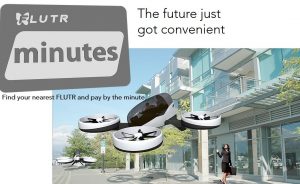
Capacity: 2 passengers + luggage
Porsche and Boeing
“Boeing, Porsche and Boeing subsidiary Aurora Flight Sciences are also developing a concept for a fully electric vertical takeoff and landing vehicle. Engineers from both companies, as well as Porsche subsidiaries Porsche Engineering Services GmbH and Studio F.A. Porsche, will implement and test a prototype.”
“A 2018 study by Porsche Consulting forecasts that the urban air mobility market will pick up speed after 2025. The study also indicates that urban air mobility solutions will transport passengers more quickly and efficiently than current conventional means of terrestrial transport, at a lower cost and with greater flexibility.”

https://boeing.mediaroom.com/2019-10-10-Porsche-and-Boeing-to-Partner-on-Premium-Urban-Air-Mobility-Market
CityAirbus
CityAirbus is an all-electric, four-seat, multicopter vehicle demonstrator that focuses on advancing remotely piloted electric vertical take-off and landing (eVTOL) flight. The CityAirbus full-scale demonstrator conducted its first take-off in May 2019.
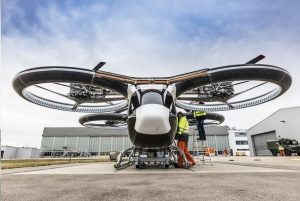
Capacity: 4 passengers
https://www.airbus.com/innovation/urban-air-mobility/vehicle-demonstrators/cityairbus.html
Lilium
We’re putting the customer at the heart of everything we do, from the first moment you open the app, to the moment you arrive at your destination. Our air mobility service will be available in various cities around the world by 2025.

Capacity: 4 passengers and a pilot
Now I’ll be honest, there truly something very George Jetson about all of this, and yes, I’m dating myself here. For you millennials out there who have no idea who George Jetson is, he’s a Hanna Barbara cartoon character from a show called The Jetsons, a futuristic show with people living in the clouds, traveling from place to place by tiny little cars enclosed with a clear, glass-like roof all around. Anti-gravity is commonplace and as far as I recall, people rarely if ever drive around on the ground anymore. I’ll be honest, I imagine most adults over the age of thirty-five or so will be familiar with The Jetsons and are using it as a subconscious reference point in assessing the new air taxi craze.
There were two aircraft that stood out to me the most as I did my research for this blog.
Number 1-FLUTR
Reason: It looks cool and most importantly, it has a parachute in case everything else goes to hell in a handbasket!

Number 2-LILIUM
Reason: It uses jets instead of rotors, with a total of 36 engines. This provides redundancy in the event of failure. Also, it looks really, really, cool and flies that way as well. It’s the only one I thought didn’t look like an oversized drone.
Just try to imagine some of the challenges that will soon emerge for what will very quickly become a commonplace mode of travel. In the Jetsons, the prevalence of anti-gravity enables the government to station speed-limit signs that just linger motionless in the air, as if anchored in a non-existent ground. At the risk of straying off-course here, I wonder what happens to those signs during a hurricane? Perhaps they are high enough above the storm they are unaffected by it; hmmm.
How will the ever-increasing air traffic be managed? Will police in the police aircars be setting up speed traps behind drone-powered billboard signs, or will they park on unsuspecting building roof tops, ready to leap into the air at a moment’s notice?
How will intersections be managed? Perhaps tall towers, rising up above the cities will be positioned to direct air traffic and manage traffic in the sky?
And what about safety? On the ground our taxi might get a flat and have to replace the damaged tire with a spare from the trunk. Or perhaps they would call AAA. Hey, there’s an idea, an opportunity for AAA to expand and offer AAAA, American Air Automobile Association!
It’s clever really, this whole idea of air taxis. I mean, we know the vehicles are very stable in the air, probably the most stable aircraft I can ever recall seeing. I was flying drones with my son when he was only eleven or twelve years old, and we both managed to keep it in the air without a major crash!
Speaking of which, what happens when these things start falling out of the skies? Now they just need to invent force fields. Also, isn’t it eerie how much nearly all UAM vehicles look like oversized toy drones we fly in our parks and at our homes? Hmm…what a coincidence.
Jeff W Horton strives to write fun, exciting, revealing, and widely entertaining fiction with a slight Christian flavor.
You can find my novels here:
You can find all of Jeff’s published novels here: Works by Jeff W. Horton | The Horton Library
Please follow Jeff:
- Read more of Jeff’s blog posts about all things science and science-fiction!
- Subscribe to his blog! https://www.hortonlibrary.com/the-horton-post/
- Linked-In: https://www.linkedin.com/in/jeff-w-horton-a8378674/
- Follow Jeff on X/Twitter: https://twitter.com/AuthorJWHorton
You might also want to explore Jeff’s website: at www.hortonlibrary.com, or visit him on the
Amazon’s Author Website for Jeff: https://www.amazon.com/stores/Jeff-W.-Horton/author/B004NK5MJC?ref=ap_rdr&isDramIntegrated=true&shoppingPortalEnabled=true
Barnes & Noble’s Website: https://tinyurl.com/1emwpg16
